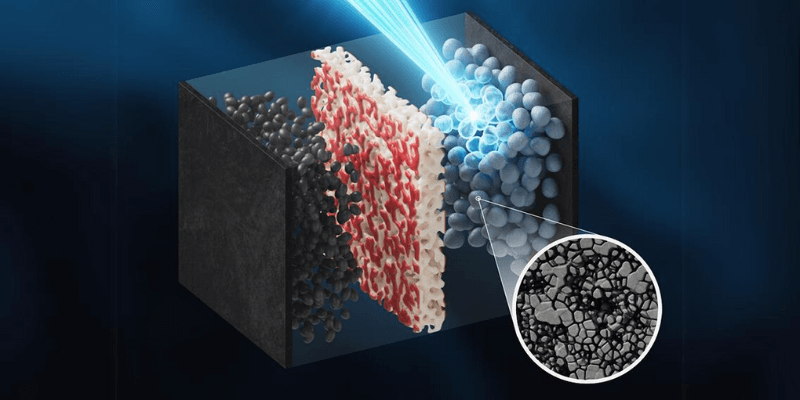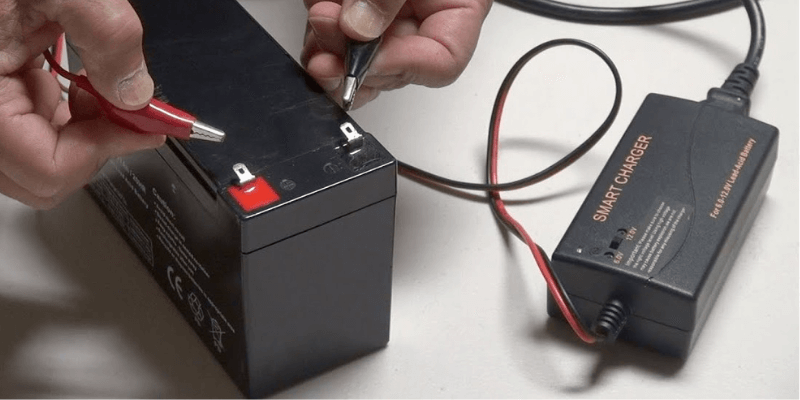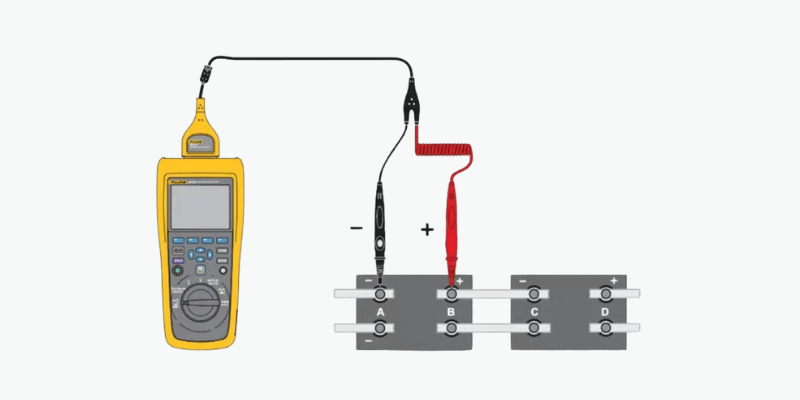Litijeve železne baterije, znano po svojem visokem energijska gostota in dolgo življenje cikla, so vse bolj priljubljeni v aplikacijah, kot so električna vozila in shranjevanje obnovljivih virov energije. Pravilna oskrba je bistvenega pomena za optimalno delovanje, dolgo življenjsko dobo in varnost. Ta vodnik raziskuje najboljše prakse za vzdrževanje teh baterij, vključno s polnilnimi protokoli in tehnikami shranjevanja.
Kaj je litijeva železna baterija?
Litijeva železova fosfat (LifePO4 ali LFP) je vrsta litij-ionske baterije, znane po lahki strukturi in visoko energijski gostoti.
Večina litijevih železnih baterij vsebuje več celic LifePO4 in a BMS. Vsaka celica vključuje katodo, anodo, separator, elektrolit in dva toka. The anoda in katoda Shranjujte litij, medtem ko elektrolit prenaša pozitivno nabito litij skozi separator. To gibanje naboja ustvari Napetost, omogoča, da električni tok pretaka iz pozitivnega terminala v vašo aplikacijo in nazaj na negativni terminal.

Kako vzdrževati litijevo železno baterijo?
Popolni litijeve železne baterije imajo omejeno življenjska doba in sčasoma izgubili sposobnost, da trajno zadržujejo naboj. Torej sta pravilna oskrba in vzdrževanje ključnega pomena za dolgo življenjsko dobo.
Ocenjena življenjska doba litijeve železne baterije je 5-15 let, odvisno od uporabe. Akumulator LifePO4 lahko do leta 2000 do 2000 celotnih ciklov polnjenja ali 6000 delnih ciklov. Celoten cikel se premakne iz popolnoma napolnjenega do popolnoma odpuščenega, nato nazaj do popolnoma napolnjenega. Puščanje baterij, ki so neizkoriščene, lahko skrajša življenjsko dobo in privede do okvare.
Priporočamo, da izvedete vsaj en celoten cikel vzdrževanja (napolnite na 100% SOC, odpustite na 100% DOD in nato napolnite na 50% Soc) vsakih 6-12 mesecev za vse neuporabljene litijeve baterije in celice. Preverite shranjene baterije za ustrezen OCV (napetost odprtega vezja) s spodnjo tabelo za minimalno priporočeno napetost shranjevanja. Če je napetost med pregledi vzdrževanja nizka, Holo Battery priporoča, da po potrebi napolnite baterijo.
| Območje napetosti (V) | Vrsta izdelka litijevega železovega fosfata |
| 3.3-3.4 | Posamezna celica |
| 13.2-13.6 | 12V baterija |
| 26.4-27.2 | 24V baterija |
| 39.6-40.8 | 36V baterija |
| 52.8-54.4 | 48V baterija |
Za boljše vzdrževanje celic ali baterij jih vsakih šest mesecev preglejte glede znakov končne korozije in vprašanj celovitosti primera. Izogibajte se uporabi poškodovanih baterij, da preprečite nevarnosti za varnost.
Baterije LifePO4 imajo med shranjevanjem počasne stopnje samopodredne. Če pa imajo funkcionalnost Bluetooth ali WiFi, se lahko hitrost praznjenja poveča zaradi vlečenja moči modula. Redno spremljanje ravni naboja baterije je ključnega pomena za ohranjanje njenega zdravja in ohranjanje proizvodnje energije.
Če želite oceniti zdravje baterije, spremljajte čas delovanja aplikacije kot preprosto metriko. Vzpostavite osnovno črto tako, da za primerjavo zabeležite začetni čas delovanja nove litijeve baterije, ko se stara. To merilo se lahko razlikuje glede na aplikacijo in konfiguracijo baterije.

Kako napolnim litijevo železno baterijo?
Litij specifičen polnilnik baterije zagotavlja popoln cikel polnjenja. Naši polnilniki LifePO4 uporabljajo inteligentno 3-stopenjsko polnjenje za oživitev globoko izpraznjenih baterij.
Poleg tega optimizirana tehnologija polnjenja poveča tako zmogljivost kot življenjsko dobo z učinkovito uporabo zmogljivosti baterije.
Več o tem v članku “Kako napolniti baterije litijevega Lron fosfat (LifePO4)”.
Kakšna hitrost polnjenja bo podaljšala življenjsko dobo litijeve železne baterije?
Polnilniki so izbrani na podlagi zmogljivosti baterije. Litijeve baterije se lahko polnijo po cenah do 1C (njihova polna zmogljivost), medtem ko je treba baterije s svinčeno kislino napolniti pod c/3. Na primer, litijeva baterija 9AH napolni pri 9 amperih, baterija 9ah svinca-kisline pa mora polniti približno 3 ampere.
Če želite podaljšati življenjsko dobo baterije LifePO4 in zmanjšati čas izpadov, ga priporočamo, da jo napolnite v območju od C/4 do c/2. Za 10ah baterijo to pomeni polnjenje pri 2,5a do 5a, pri čemer je 2,5a idealna. Če morate izbirati med 2A in 5A polnilnikom, se odločite za polnilnik 2A, da povečate življenjsko dobo baterije, kljub daljšemu času polnjenja približno 5 ur.
Tok izklopa naboja je običajno nastavljen med 2,5-5% zmogljivosti baterije, kar ima za primeri 10ah, kar ima za posledico presežni tok od približno 0,25-0,50a. Večina polnilcev samodejno upravlja s tem izklopom brez ročnih prilagoditev.
Univerzalni polnilci ponujajo prilagodljivost za izbiro različnih vrst kemije, pri čemer zagotavljajo najboljše napetostne razpone in ustrezne mehanizme preseka, ko dosežejo polno naboj. Na primer, ti polnilci lahko samodejno izklopijo za litijeve baterije ali preklopite na način polnjenja za zaprte baterije svinca (SLA), kar poveča varnost in učinkovitost postopka polnjenja.

Dolgotrajno shranjevanje
Ko dolgoročno shranjujete baterije, razmislite o različnih zahtevah za SLA in litijeve baterije.
Shranite SLA baterije v bližini 100 -odstotnega stanja polnjenja (SOC), da preprečite sulfiranje, kar zmanjšuje zmogljivost zaradi nabiranja sulfatnega kristala. Litijeve baterije je treba shraniti okoli 50% SOC, da se ohrani stabilnost v pozitivnem terminalu in se izognete trajni izgubi zmogljivosti. Za posebne smernice o shranjevanju litijeve baterije se glejte Namenski vodnik.
Stopnje samo-odvajanja vplivajo tudi na shranjevanje: SLA baterije imajo visoko stopnjo samostojnega odvajanja in jih je treba hraniti na plavuti ali naboju v bližini 100% SoC. V nasprotju s tem imajo litijeve baterije nižjo hitrost praznjenja in lahko zahtevajo minimalno vzdrževanje, če ni parazitskih risb, kot so moduli Bluetooth.
Kako preprečiti, da bi litij-ionska baterija korodirala?
Holo baterija ima integrirane funkcije v naše sponke baterije za boj proti koroziji. Vendar pa lahko baterije kljub oskrbi še vedno korodirajo sčasoma.
Korozijo lahko zmanjšate z upoštevanjem teh korakov:
- Shranite baterijo v hladnem in suhem okolju, da zmanjšate korozijo in podaljšate svoj rok trajanja.
- Sponke zatesnite z zaščitnim sredstvom za razpršilo pred prodajalnimi samodejnih delov za optimalno preprečevanje.
- Redno preverjajte in očistite svoje litijeve baterijske terminale z mehko suho krpo, če se zdijo umazani, da pozneje preprečite težko kopičenje.

